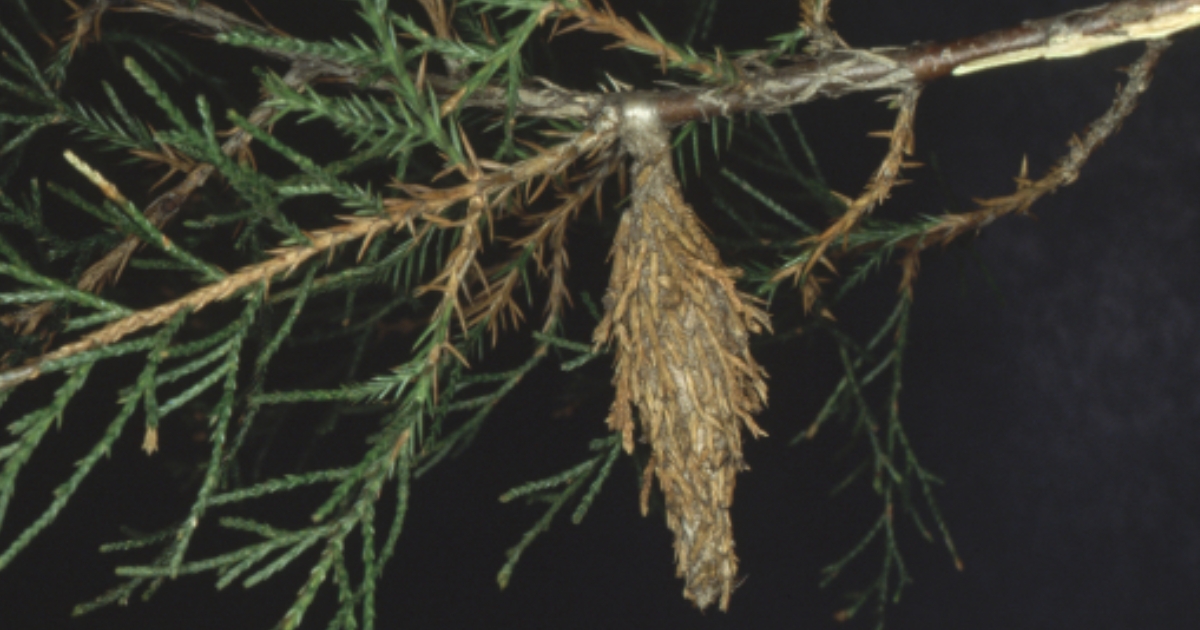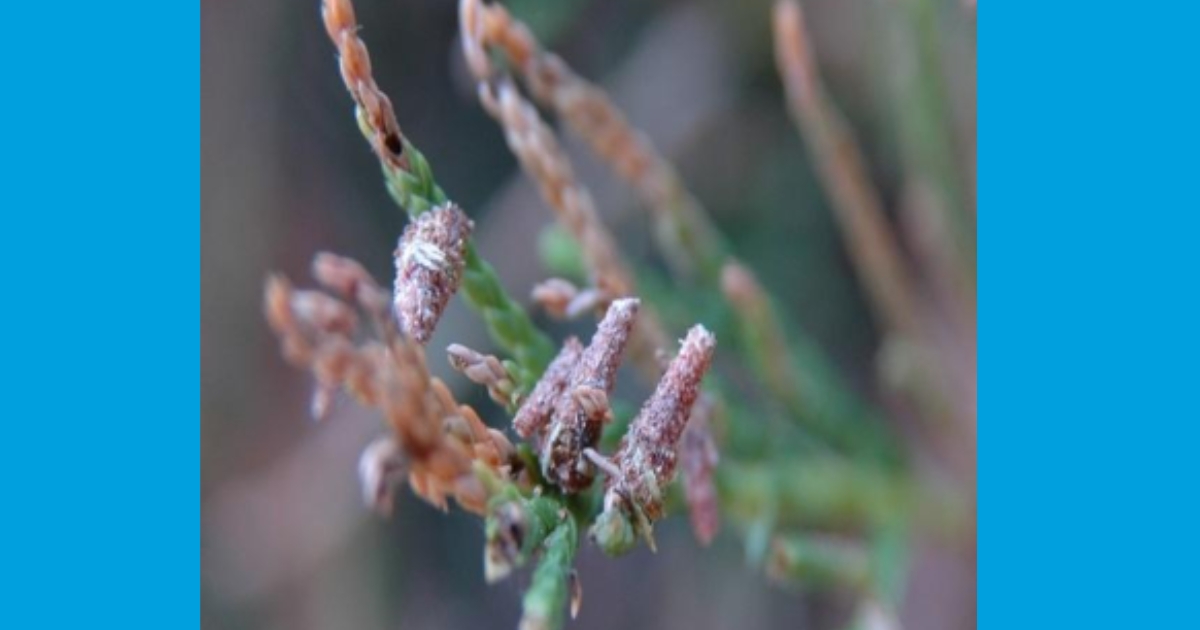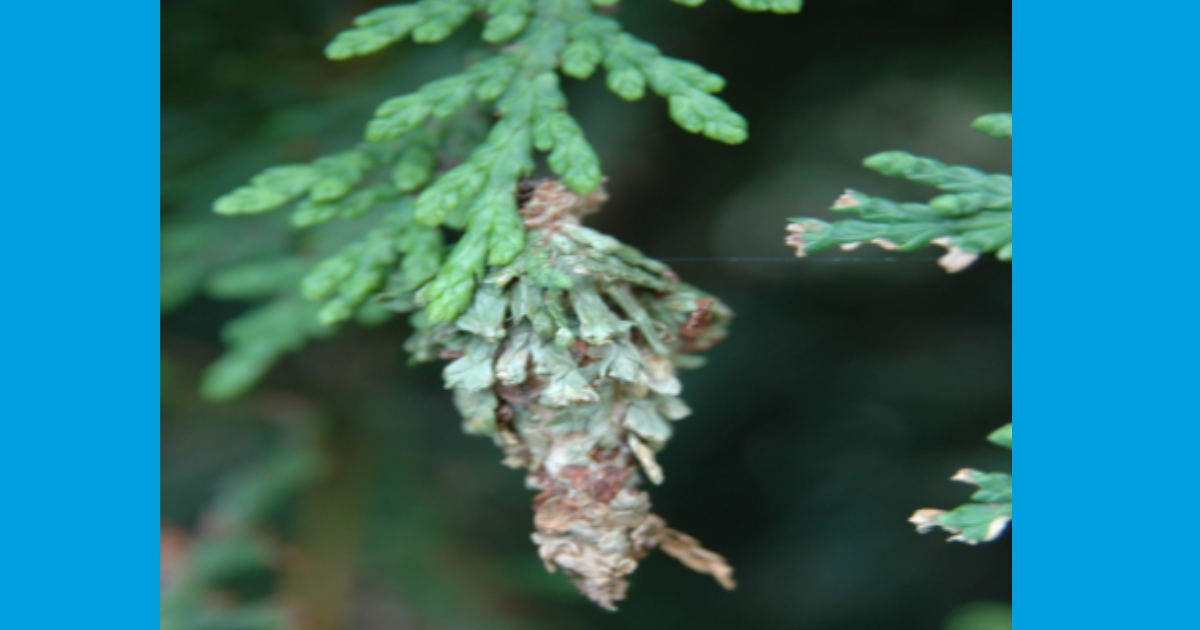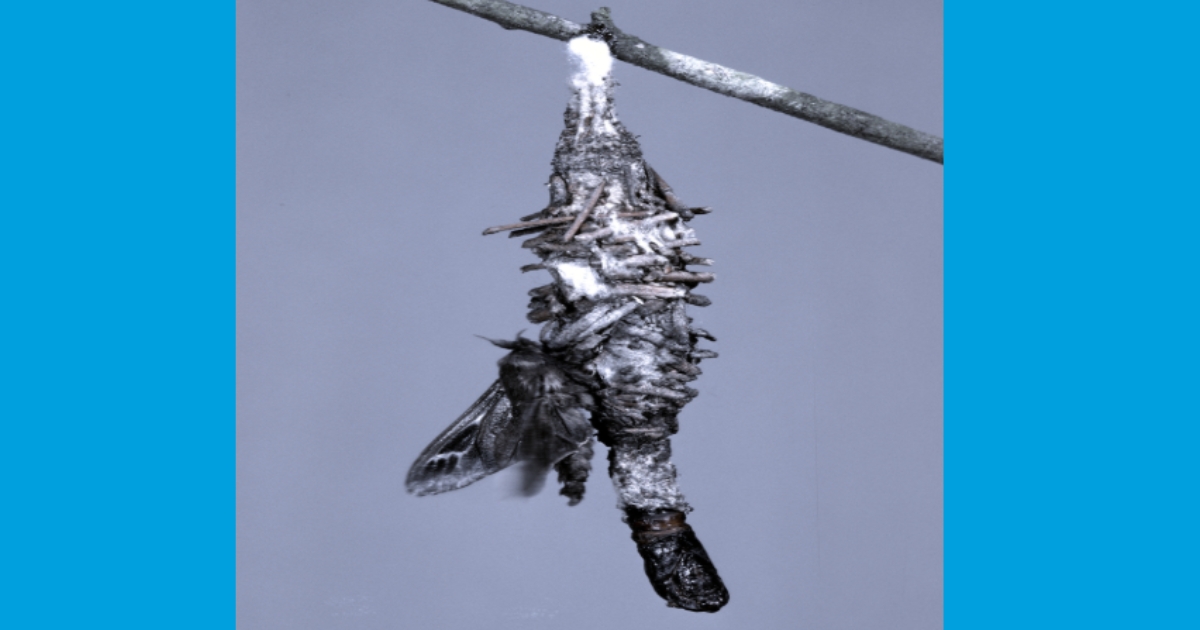
Fact Sheets And Publications

Bagworms (Lepidoptera: Psychidae)
June 2025 | Written by: Skylar Foland and Brian Kunkel
Description
The bagworm, Thyridopteryx ephemeraeformis, is a species of moth that builds and inhabits spindle-shaped bags of vegetation. Bagworms prefer to feed on arborvitae and may be found on other coniferous plants, including junipers, cedar, pine and cypress. They are rarely found on deciduous plants such as sycamores, locusts, or oaks.

Life Cycle
Bagworm caterpillars hatch around the end of May (364 – 710 GDD50). Caterpillars will float on silk or crawl to an unoccupied section of foliage after hatching and begin to build small, conical “bags” that generally stick up from the substrate (“dunce caps”). Larvae feed from 519 – 3,041 GDD50 which is usually from June until late August. Viburnum dentatum may be in bloom as feeding begins.

At maturation, the bag is about two inches long and hangs downward in a spindle shape. Adult females pupate but remain in a caterpillar-like form, and they do not leave their bag. Adult males pupate into a typical moth form with a dark body and clear, ½ inch wings. The male mates with the female, and she dies after she lays her eggs. Eggs overwinter in her bag.


Biological Control
Bagworms have a variety of natural enemies such as paper wasps, parasitoids and birds, particularly finches. An ichneumon wasp is known to feed on bagworms, but it does not control infestations quickly. A diverse habitat provides niches for these natural enemies, which will help suppress pest populations. Diverse habitats should include seed-bearing, fruiting, or flowering plants in the vicinity of affected plants.
Chemical Control
Chemical controls are available for controlling this pest. Many of these insecticides are reduced-risk or are biopesticides. The bagworm is protected from insecticides by the bag it constructs. Bagworms obtain their toxic dose from insecticides through consuming treated foliage. Adequate coverage is important for the successful management of bagworm populations; consequently, applications need to reach the interior portions of trees.
Please contact your local cooperative extension office for current insecticide recommendations.
Mechanical Control
Bagworms can be mechanically removed from host trees by plucking the bags from the tree. Plucked bags should be drowned in soapy water or cut into multiple pieces to ensure that the larvae die.
References
All images taken from InsectImages.org.
UD Cooperative Extension
This institution is an equal opportunity provider.
In accordance with Federal law and U.S. Department of Agriculture policy, Cooperative Extension is prohibited from discriminating on the basis of race, color, national origin, sex, age, or disability.
